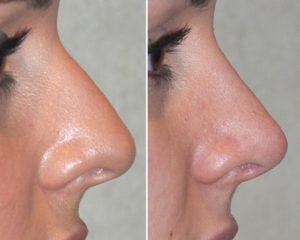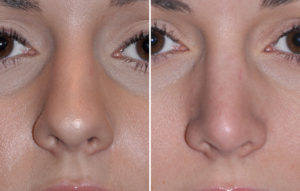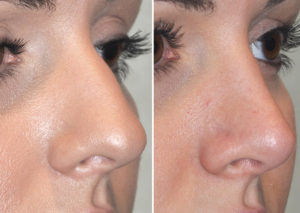Background: The surgical reduction of a nasal hump is one of the oldest techniques in rhinoplasty. It has been done since the nasal reshaping procedure was introduced and, historically, defines what a rhinoplasty was. It has long been recognized that a raised or convex profile to the dorsum of the nose is not an aesthetically desirous nasal feature for most people. In addition it can he perceived as an ethnic nasal feature and in trying o achieve better nasal shape its removal can also make the nose more ethnically neutral.
The upper third of the nose is commonly known as the bridge. While often perceived as being bony in composition, it is really a combination of bone (nasal bones) and cartilage. (septum and upper lateral cartilages) This becomes apparent when a hump is present and its removal is requested. Taking down a dorsal hump on the nose always requires removal of both bone and cartilage of which cartilage usually makes up the greatest percentage of the hump.
The standard goal in most hump reduction is to change the profile of the nose to a straight line. This linear dorsal profile is most commonly accepted and is one that optimally maintains nasal airway function. But it is not the only dorsal profile that is requested. Some females may want a more concave dorsal profile while some men may want to maintain a bit of convexity to it or the semblance of a small dorsal hump.
Case Study: This young female had several features of her nose that she wanted changed for a slimmer more feminine nose. One was the long dorsal hump that covered the entire distance of her nasal profile.


Highlights:
1) The presence of a hump on the nose is the most common reason patients seek rhinoplasty surgery.
2) A straight dorsal line is the most desirous shape that those with a hump reduction seek.
3) Hump reduction consists of both bone and cartilage removal for which ‘rasping’ alone is not an adequate treatment.
Dr. Barry Eppley
Indianapolis, Indiana



